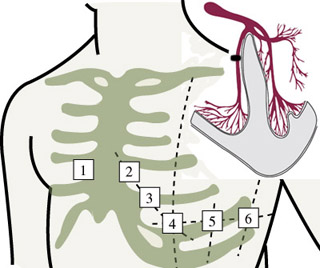
Electrocardiography provides visibility into the heart's electrical activity, helping doctors diagnose a wide range of cardiac abnormalities. For example, a blockage in the right bundle branch of the intraventricular conduction system (inset) produces a particular set of characteristic ECG signals. (Figure by MIT OCW.)
Instructor(s)
Prof. Jose Venegas
Prof. Roger Mark
MIT Course Number
HST.542J / 2.792J / 20.371J / 6.022J
As Taught In
Spring 2004
Level
Undergraduate
Course Description
Course Features
Course Description
This course elaborates on the application of the principles of energy and mass flow to major human organ systems. It discusses mechanisms of regulation and homeostasis. It also discusses anatomical, physiological, and pathophysiological features of the cardiovascular, respiratory, and renal systems. There is emphasis on those systems, features, and devices that are most illuminated by the methods of physical sciences.


